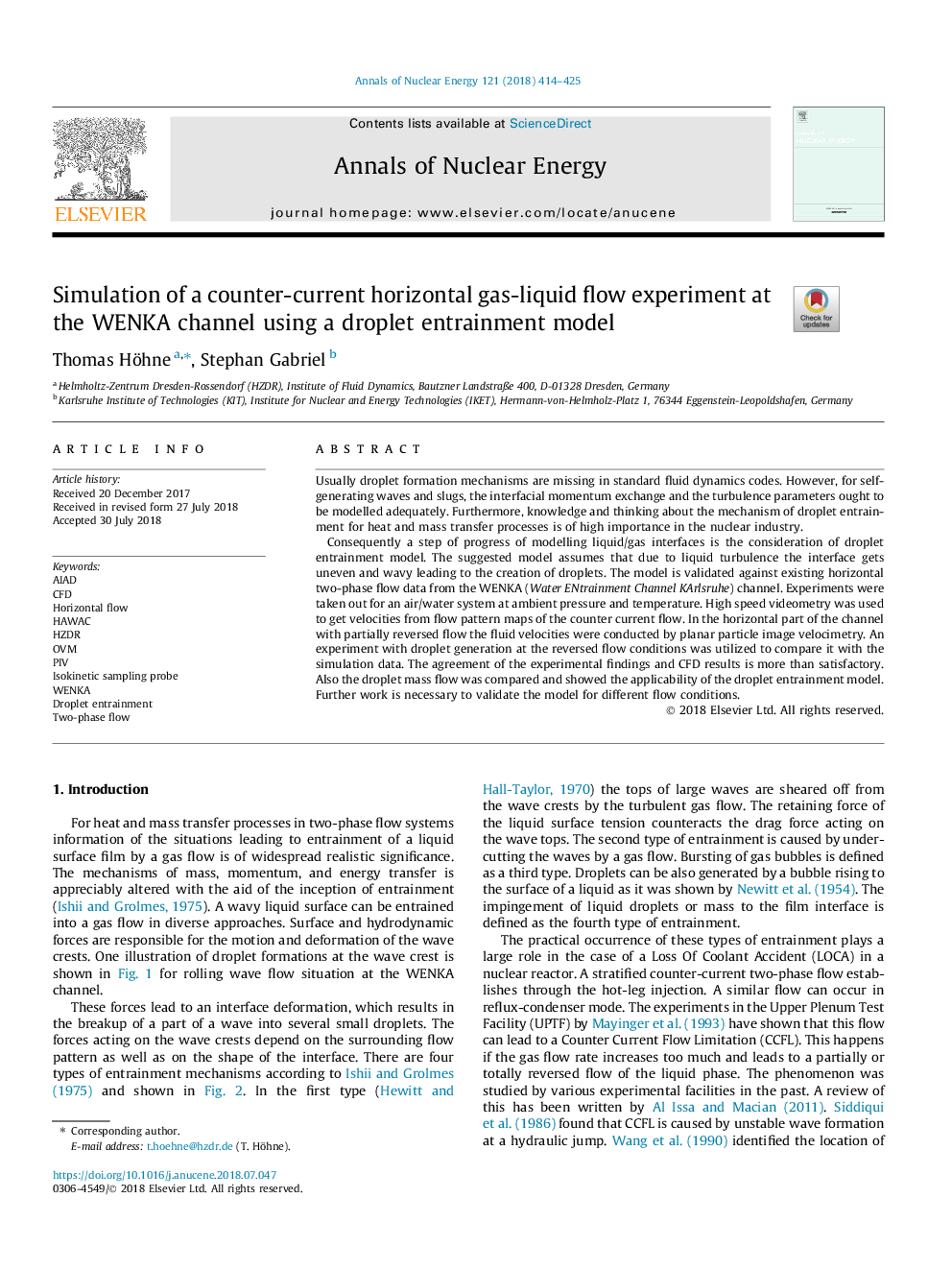| Article ID | Journal | Published Year | Pages | File Type |
|---|---|---|---|---|
| 11007341 | Annals of Nuclear Energy | 2018 | 12 Pages |
Abstract
Consequently a step of progress of modelling liquid/gas interfaces is the consideration of droplet entrainment model. The suggested model assumes that due to liquid turbulence the interface gets uneven and wavy leading to the creation of droplets. The model is validated against existing horizontal two-phase flow data from the WENKA (Water ENtrainment Channel KArlsruhe) channel. Experiments were taken out for an air/water system at ambient pressure and temperature. High speed videometry was used to get velocities from flow pattern maps of the counter current flow. In the horizontal part of the channel with partially reversed flow the fluid velocities were conducted by planar particle image velocimetry. An experiment with droplet generation at the reversed flow conditions was utilized to compare it with the simulation data. The agreement of the experimental findings and CFD results is more than satisfactory. Also the droplet mass flow was compared and showed the applicability of the droplet entrainment model. Further work is necessary to validate the model for different flow conditions.
Related Topics
Physical Sciences and Engineering
Energy
Energy Engineering and Power Technology
Authors
Thomas Höhne, Stephan Gabriel,
